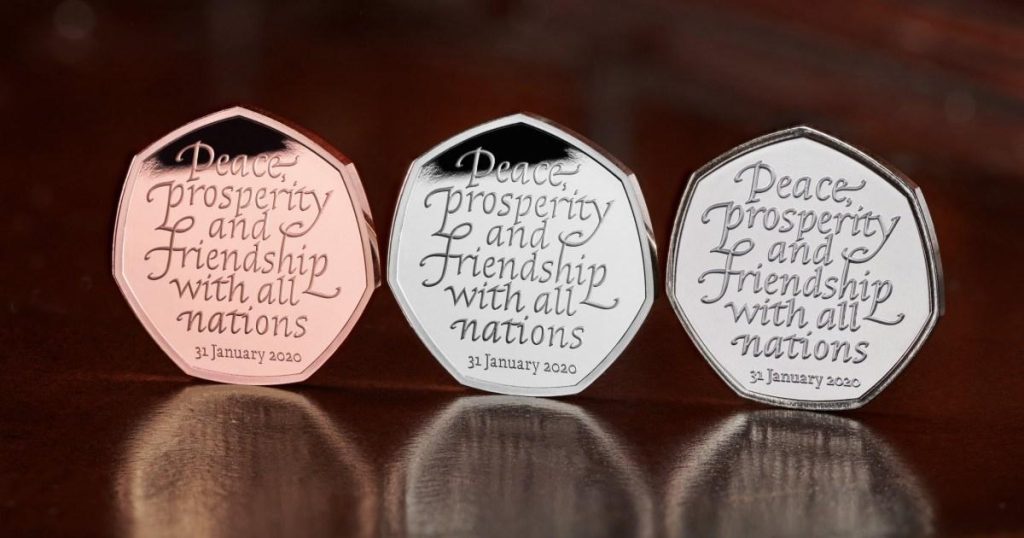The Brexit 50p: A Numismatic Golden Ticket
The United Kingdom’s departure from the European Union, a momentous event in modern British history, was commemorated by the Royal Mint with the issuance of a special 50 pence coin. Intended to mark the official date of Brexit, January 31, 2020, these coins entered circulation bearing the inscription "Peace, prosperity and friendship with all nations" alongside the date. However, the journey of this commemorative coin took an unexpected turn, transforming a seemingly ordinary piece of currency into a highly sought-after numismatic treasure.
Initially, the Royal Mint had prepared a million 50p coins bearing the date of October 31, 2019, the original Brexit deadline. When the departure date was subsequently delayed, these coins were purportedly melted down, effectively erasing their existence from official records. This action, intended to prevent the circulation of inaccurate commemorative coins, inadvertently laid the groundwork for a remarkable numismatic discovery. The presumed destruction of the October 31, 2019, coins elevated them to the realm of rarity, making their potential discovery akin to finding a needle in a haystack.
Contrary to expectations, two of these "phantom" coins, bearing the earlier October 31 date, have surfaced, sparking a frenzy among coin collectors and captivating the attention of numismatic experts. Their emergence is nothing short of extraordinary, considering the stringent security measures in place at the Royal Mint. The appearance of these coins has been likened to finding Willy Wonka’s coveted golden ticket, a testament to their unexpected survival and the immense value they now hold. The discovery has prompted excitement and speculation, with experts predicting that these rare coins could fetch substantial sums at auction.
Gregory Edmund, a specialist at the renowned auction house Spink and Son, has described the discovery as a "Charlie Bucket moment," referencing the protagonist of Roald Dahl’s famous novel who stumbles upon a golden ticket, granting him access to Willy Wonka’s fantastical chocolate factory. The analogy perfectly encapsulates the rarity and unexpected nature of the find. Edmund’s enthusiasm is underscored by his belief that these coins could shatter the previous record for the highest price paid for a circulating British coin at auction, which currently stands at £42,000 for a 1965 gold halfpenny with an error.
The two discovered coins were reportedly found by "lucky coin hunters" sifting through their loose change, a testament to the unpredictable nature of numismatic discoveries. While the Royal Mint has yet to officially authenticate the coins, their existence has generated considerable interest. Edmund, eager to uncover further examples of these rare coins, has established a dedicated email hotline, inviting anyone who believes they may have stumbled upon one to contact him. This initiative underscores the significance of the find and the potential for further discoveries.
The emergence of the October 31, 2019, Brexit 50p coins has transformed them from a simple commemorative item into a highly sought-after collectible. Their rarity, coupled with the historical context of Brexit, has imbued them with a value far exceeding their face value. The story of these coins serves as a reminder that even in the seemingly mundane world of loose change, extraordinary treasures can lie hidden, waiting to be discovered. The hunt for these numismatic golden tickets is on, and the potential rewards are substantial for those fortunate enough to find one. The story also highlights the human element of collecting, the excitement of the hunt, and the thrill of discovering something rare and valuable in an unexpected place. The Brexit 50p, once intended as a simple commemoration, has become a symbol of chance, rarity, and the enduring allure of numismatics.











